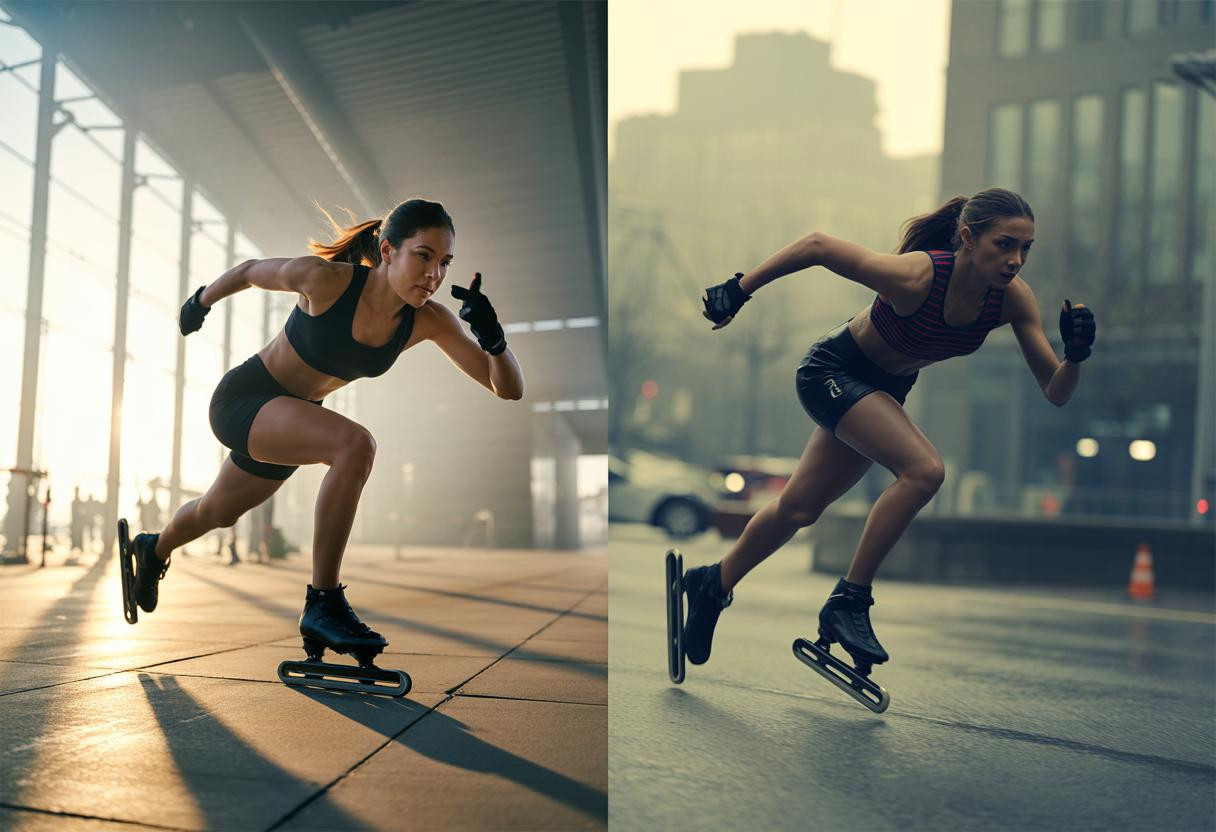The morning I decided to add speed skaters to my daily routine, I had no idea how dramatically my coordination would improve. After just 30 days of this dynamic exercise, I noticed changes not just in how I moved, but in how I navigated everyday life. The transformation was both surprising and scientifically fascinating.
What exactly are speed skaters?
Speed skaters (or skater jumps) are lateral plyometric movements where you jump from side to side, mimicking a speed skater’s motion. Each rep requires you to land on one leg while the other leg swings behind, demanding balance, coordination, and strength simultaneously.
“Speed skaters are one of the most effective functional exercises for developing multi-directional agility and coordination,” explains Dr. Megan Chen, sports physiologist at the Athletic Performance Institute. “They train your body to move efficiently in ways that translate directly to both athletic performance and everyday movements.”
My 30-day speed skater experiment
My protocol was simple: 3 sets of 20 speed skaters every morning before breakfast. I started with basic modifications, gradually increasing intensity as my coordination improved. By week three, I was performing full-range, explosive movements with proper form.
The most notable improvements came in these areas:
- Lateral movement confidence and speed
- Single-leg stability
- Reaction time in unexpected situations
- Overall body awareness
The science behind improved coordination
When I shared my results with kinesiologist Dr. James Wilson, he wasn’t surprised. “Speed skaters create new neural pathways through consistent repetition of complex movement patterns. Your brain essentially rewires itself to make these movements more efficient – what we call neuromuscular adaptation.”
This adaptation is similar to what happens when training with playground equipment – your body learns to respond to challenging positions through regular practice.
Beyond coordination: The total-body benefits
Speed skaters deliver comprehensive fitness benefits beyond just coordination:
- Lower body strength development (particularly in the glutes and outer thighs)
- Cardiovascular conditioning when performed continuously
- Core stability improvement
- Ankle strength and mobility enhancement
Real-world coordination improvements
Perhaps the most fascinating outcome was how my improved coordination transferred to daily activities. Like someone who experiences doubled core strength from static holds, I found my newfound coordination had practical applications.
One morning, I nearly slipped on wet pavement but caught myself with remarkable ease – my body instinctively knew how to redistribute weight and maintain balance. My tennis game improved significantly, particularly my ability to change directions quickly during rallies.
How to incorporate speed skaters effectively
If you’re inspired to try this coordination-boosting exercise, consider these pointers:
“Start with small, controlled movements focusing on form rather than distance,” advises Amanda Torres, certified strength coach. “The coordination benefits come from quality repetitions, not how far you jump side-to-side.”
Begin with assisted speed skaters (touching the floor for balance) before progressing to more dynamic versions. This approach is similar to how calf raises can improve running mechanics – controlled progression yields the best results.
Combining with other exercises for maximum benefit
For enhanced results, I occasionally paired speed skaters with endurance-building techniques and low-impact workouts on recovery days.
Speed skaters are like coordination currency – investing just a few minutes daily yields remarkable returns in how your body functions. After 30 days, my movement efficiency became noticeably smoother, my balance more reliable, and my confidence in physical activities substantially improved. If there’s one bodyweight exercise worth adding to your morning routine, this might just be it.
